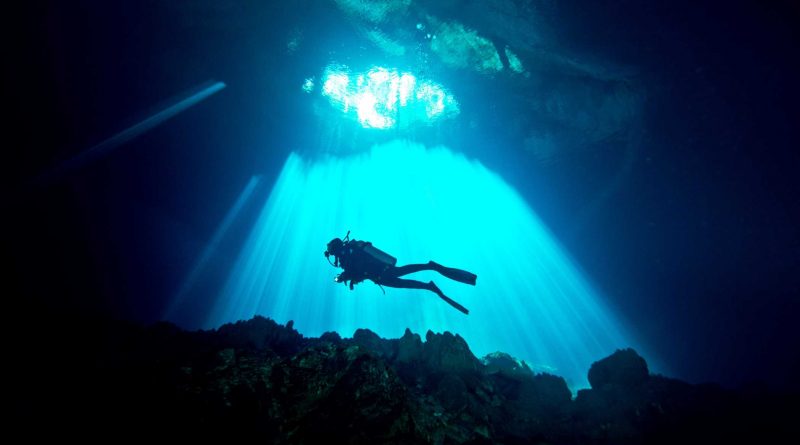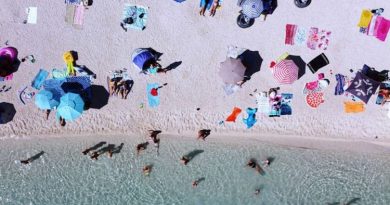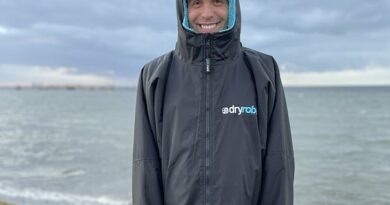How to Get Scuba Certified for Your Next Vacation
“For most people, this is as close to being an astronaut as you’ll ever get. It’s leaving planet Earth behind and entering an alien world.” That’s how Mary Frances Emmons, deputy editor of Scuba Diving magazine, describes the thrill of strapping on a self-contained underwater breathing apparatus and plunging into the depths of the sea.
Scuba diving is an immensely popular sport, with more than 2.6 million participants in the U.S. in 2019, according to the Sports & Fitness Industry Association. Even so, potential divers might be intimidated by the required training and perceived costs, or by how the hazards of the sport are depicted in pop culture. But below the choppy surface, scuba diving is a safe, accessible pastime that’s unlike any other, as long as you’ve taken the time to learn the ropes. Here’s what you need to know.
This article has been updated with new information since its original publish date.
Dipping your toe into scuba diving
If you enjoy snorkeling on vacation to spot colorful reef life and schools of fish, it’s worth taking a trial run at scuba diving to see if it might be time to upgrade your water hobby. Sarah Richard, founder of the online women’s diving community Girls That Scuba, recommends your first scuba experience occur on vacation and alongside trained professionals. Dive shops often offer short ‘Discover Scuba Diving’ sessions in the ocean that guide you through the basics and provide a taste of what scuba diving requires and feels like. “If you enjoy that you can then sign up to start your first course, the one you need to be a certified diver is your Open Water Course,” Richard says.
Learning to scuba dive on vacation can be fun, but traveling to a far-flung location for training isn’t required—even those in land-locked areas can find local classes hosted at local pools. Dive schools from Florida to Ohio to Washington State certify students over several days of training (sometimes several weekends in a row; other times over a one-week course), and PADI offers an online guide to U.S. dive sites and dive shops that can help you search for a course and decide if you’d like to learn at home or somewhere travel-worthy.
Inka Cresswell, an underwater filmmaker and former dive instructor, recommends leaving the certification hours and classroom-style study to be done at home if your vacation time is limited. “Use a local school [at home] where you can do your training, that way when you get on vacation you can enjoy the dives and not be wasting time stuck in a classroom.” The academic part of scuba certification, which can be done online, precedes your diving hours to ready you for an actual dive (more on that below) and takes between 8 and 15 hours to complete in most programs.
How to get scuba certified
No respectable dive shop or scuba tour company will provide equipment or services to a person who cannot show a valid C-card: a small plastic card proving that you’ve taken the proper certification classes. Thankfully, opportunities to receive training are more abundant than ever. The three most prominent international certification programs are run by the Professional Association of Diving Instructors (PADI), the National Association of Underwater Instructors (NAUI), and Scuba Schools International (SSI). All three of those main certifications are globally recognized, Cresswell says, which will be important if you plan to scuba dive around the world.
Programs can vary in duration (from just a few days to a couple of months) and cost (somewhere in the $200–600 range), but usually consist of a few standard components: Initial “book learning” covering basic skills and safety principles (in a classroom setting, or through PADI’s e-learning portal); “confined water” training in a pool or other enclosed body of water to become acquainted with equipment (privately or in a group); and a series of four “open water” dives (between 15 and 60 feet deep) to put those learnings into practice.
Is it safe?
Safety concerns often hold back those interested in scuba from taking the literal plunge, but serious accidents are rare, a 2019 report from the nonprofit Divers Alert Network demonstrates. Among the most important aspects of certification is learning how to react in any given situation, and being acutely aware of your body, equipment, and surroundings.
“There’s always some element of risk because none of us can hold our breath forever and we can’t breathe [under] water, but we can learn to handle those risks safely,” says James Morgan, vice president of PADI’s Training, Sales & Field Services. “Over the [certification] course, we not only talk about what the risks are, but how to mitigate them. We go through and practice safety procedures.”
Another oft-expressed apprehension among newbies is fear of sharks, no doubt perpetuated by movies and TV. Prior to the 2016 release of The Shallows, for example, marine biologists were in such an uproar over what they felt to be mischaracterization of sharks that they sent an open letter to Columbia Pictures setting the record straight. The fact is, sharks in the wild have no interest in humans as long as they don’t feel attacked, or think you’re stealing their food.
Dive spots for beginners
Once you’re ready to dive, it’s time to start seeing reefs, shipwrecks, and sea life up close. Domestically, first-time divers love the Florida Keys, which are home to the largest barrier reef in the U.S. For non-tropical dives, Michigan, Washington State, and Missouri’s beginner-friendly underground “dive trails” all make have a reputation for travel-worthy scuba diving.
For a first adventure abroad, Cresswell recommends hitting Gili Trawangan, in Indonesia’s Gili islands, for shallow shipwrecks and a sea turtle sanctuary where divers can find the massive animals nesting among the coral, all under less than 60 feet of water.
The gear
While certification programs (and most dive shops) will typically provide most of the equipment you’ll need (air tanks, fins, and regulators), beginners should invest in a well-fitting scuba mask. Ensuring your goggles are snug will help them stay fog-free (try rinsing your lenses in baby shampoo before dives to avoid the issue altogether) so you can avoid wasting oxygen/time adjusting them. If you plan on doing any wintertime or cool water dives, consider a wetsuit that fits like a glove.
“As a beginner diver you can hire all your equipment with your dive center,” says Richard of Girls That Scuba. “However it’s always great to have your own well-fitted mask and you may also want to look into a wetsuit, especially if you are female, as it can be harder to find a wetsuit off-the-rack that will fit straight away.” Girls That Scuba offers recommendations for plus-size divers here.
Other gear to consider once you advance to greater depths includes a watch-style dive computer, which monitors water depth and dive time for you. Cresswell says the group-diving settings you often encounter while traveling can be greatly improved with one. “Everyone’s dive profiles can be slightly different, so your own personal dive computer will allow you to track your own dive and give you peace of mind,” she says. “When I first started diving a mask was my first priority, but now that I’m a more experienced diver who’s comfortable enough in the water, a dive computer is my highest priority. I never dive without one.”
Why it’s more worthwhile than ever
Scuba is considered a safe, socially distant activity you can do almost anywhere, once you get there: The coronavirus pandemic limited where many divers could go, Cresswell and Richard say, but with travel restrictions now lifting the sport remains unchanged, and is a better way than ever to sightsee on vacation, from fast-fading coral reefs to underwater museums. The pandemic has taught us that access to such sites could be cut off abruptly, and at any time.
“The most interesting thing [I’ve seen while diving] was the healthy coral reefs of Papua New Guinea. That area has more species of hard and soft corals than almost anywhere in the world. It’s like a continuous field of colorful flowers,” says Stephanie Adamson, PADI instructor and co-founder of Scuba Diver Girls. “Also, diving the preserved wrecks in the Baltic Sea was an experience like none other.”
Source: Read Full Article



